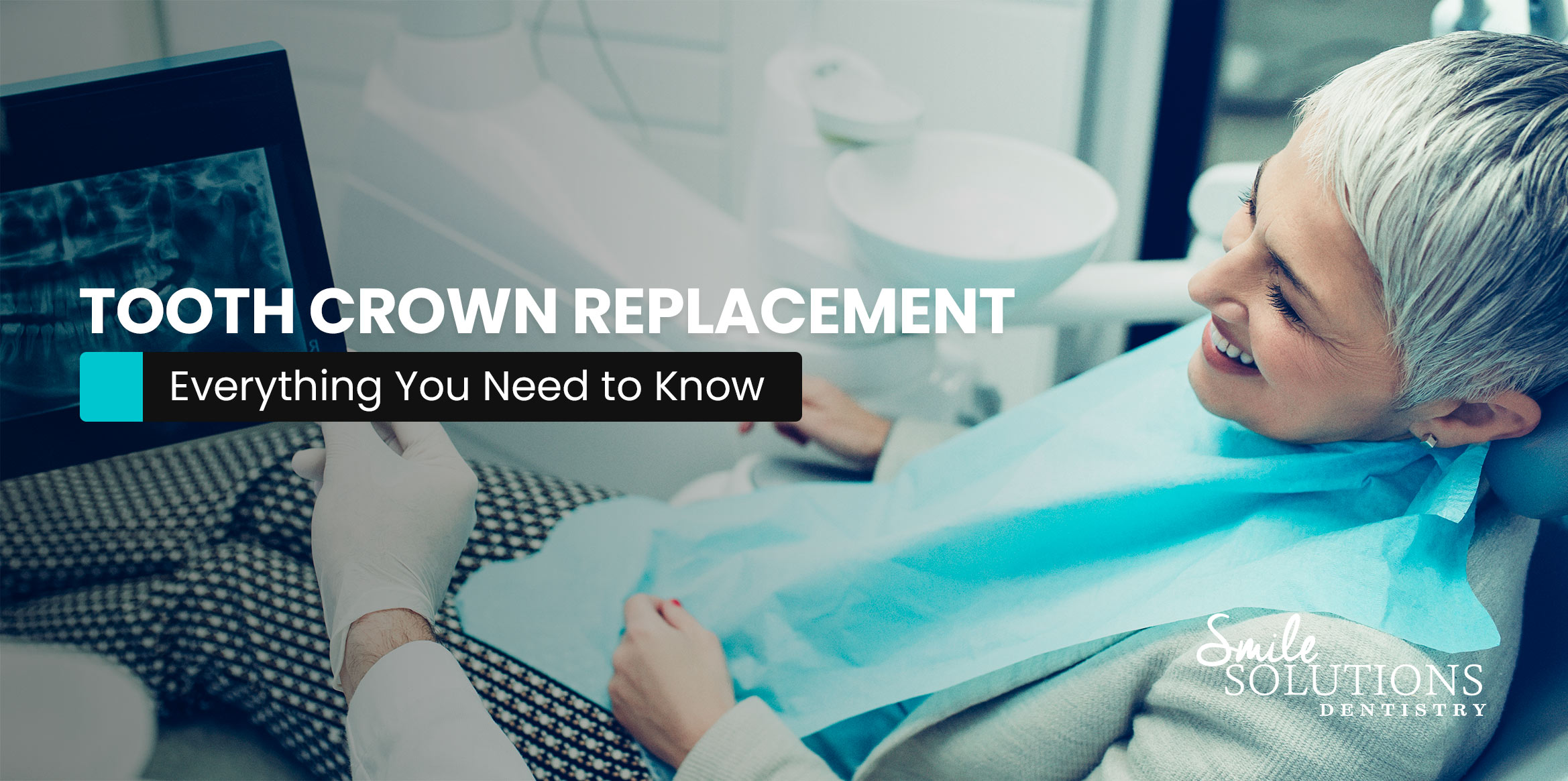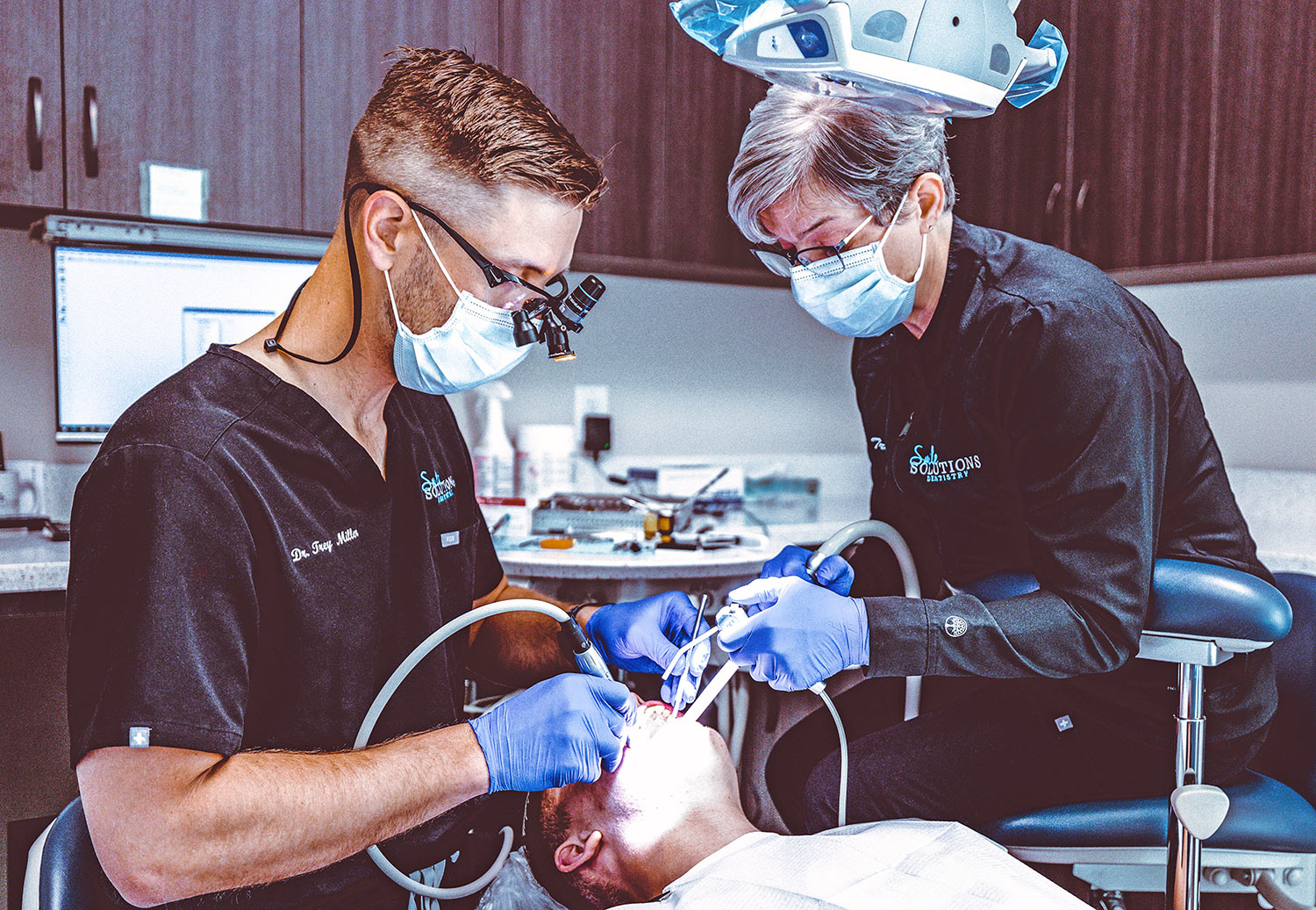Tooth Crown Replacement: Everything You Need to Know
As a considerable part of the population has a dental crown, we are often exposed to patients asking if their crowns need replacement. Without an evaluation, it isn’t easy to give simple answers because the decision depends upon several factors, and appearance is not the only one.
There are so many reasons why a patient needs a dental crowns. Over time, your teeth can get damaged because of decay, injuries, age, wear and tear or simply genetics. Modern crowns not only protect your teeth but also improve your appearance. They can be used as an anchor for a dental bridge or replace a missing tooth. Even though they can last for a long time if properly maintained, there are times a tooth crown replacement is needed.
What Are Dental Crowns?
Dental crowns are caps placed on your damaged teeth. They are used to protect, cover, and restore the shape of your damaged tooth, and they can be permanent and temporary.
The purpose of temporary dental crowns is to provide a temporary covering to protect your tooth during times of healing or for a dental lab to process and fabricate your new crown. These acrylic or resin composite crowns can stand for a few weeks to a couple months.
As for the permanent crowns, composite dental cements or luting agents are what bond the crown to the tooth to help keep your crown on your tooth. They also help seal the edges or margins of the tooth and crown.
Signs You Need a Tooth Crown Replacement
Even though dental crowns can last for more than a decade, sometimes, the dentist needs to replace them. Sometimes the reason for the replacement can be apparent, such as the crown falling out. But other times (and most of the time), it is not so obvious. Here are a few examples of why your crown may need to be replaced.
Age of the Crowns
These tooth crowns can last up to 15 – 30+ years with the proper care. As they get older, the crowns turn more fragile. They may not have any sign of damage or wear and tear, but you should have them monitored for signs of problems or potential complications. After a decade of having the same tooth crown, you should schedule an appointment with your dentist for a checkup even though you don’t see anything wrong with it.
Wear and Tear
Permanent dental crowns are usually from porcelain or a type of ceramic material, so they stay durable and stain-resistant forever. However, dental crowns begin to wear over time and grind. New aged dental crowns made out of Zirconia will be less likely to wear as the crowns age.
Tooth Decay
Tooth decay can be an initial reason why you need a tooth crown. It is also a reason why you need a tooth crown replacement. If a crack occurs, food particles can get underneath the crown. Then bacteria have a place to build up and damage your natural teeth. Even though you have a full covering or replacement of a tooth with a crown. The tooth underneath can still get a cavity if proper care and dental hygiene isn’t taken.
Pain and Swelling
Whenever your gum gets swollen or sore, consider it a red flag – it’s time to see the dentist. It’s important to react fast because, over time, gum infection can develop and cause significant problems. If a tooth crown is broken or worn out, it can cause toothache or extreme sensitivity to your tooth, so it may be time to replace them.
Cosmetic Reasons
Sometimes a dental crown is used as a cosmetic service for front teeth. A dental crown has more flexibility when closing gaps, rotated teeth, or significantly broken down teeth. Dental crowns can’t have the same color as your natural teeth but with modern staining we can get pretty close so when replacing one front tooth you should expect the tooth shade to be similar but a perfect match is not always possible. The dental crown and cement used to fix them can’t undergo the whitening process, so colors can be different and won’t blend in as much. So anytime a cosmetic crown is being done we recommend bleaching prior to your appointment.
You have to pay attention to the signs that indicate something is wrong. Ignoring these signs may lead to more severe damage and pain. If you experience any of these signs, schedule a call today, and we will take great care of you.
What can you get the most out of your tooth crown?
Avoid Sticky Food
Sticky or extremely chewy food can also cause problems with a dental crown. They can either loosen or weaken them or cause faster enamel forming because sticky parts get trapped between the tooth and the crown.
Brush and Floss
Brushing and flossing your natural teeth is very important for their health. The same goes for dental crowns because they may be artificial but underneath them are your natural teeth. They have to stay healthy so they can be the crown’s support for longer. There’s no need to be extra careful; you can floss them the same way you floss your natural ones. You have to be more gentle when having a temporary crown.
See the Dentist Regularly
Routine checkups and cleanings are essential for a healthy and beautiful smile. Those regular appointments can prolong how much your crowns will last.
Get Rid of Bad Habits
A patient under a lot of stress develops these bad habits unconsciously. Whether it’s biting your nails, chewing on a straw, or grinding your teeth, you need to stop and try to mitigate the habit.
Use a Night Guard
It’s one thing to work on stopping your bad habits while awake and different when you’re not aware of them – when you’re sleeping. Using a night guard can prevent grinding motions during the night, which causes a lot of wear and tear and crown damage.
Pre-Op Overview
Before you undergo this procedure, you have to provide your dentist with relevant medical information because they can affect the procedure. Some medical conditions that can affect a tooth extraction are heart defect, liver disease, artificial joints, taking blood thinners, have diabetes or if you have a compromised immune system. When you provide your dentist with such information, it’s easier to avoid any potential problem ensuring a quick and speedy recovery. Avoiding these important questions can put you at risk for serious life threatening conditions.
Tooth Crown Replacement Procedure
The replacement procedure is very similar to the initial crown procedure. The dentist will first numb the area to reduce discomfort. Then, they will clean your teeth to remove any debris and decay. After that, a dentist will take another tooth impression so that he can make the crown again. Because the crown-making can take a few weeks, a temporary crown will cover your teeth. When the crowns are ready, it’s time for fitting. The dentist will ensure the size, position, and color are correct before final fixation with cement.
Cost of the Procedure
The cost of this procedure varies depending on the number of crowns, their position, and how much work around the tooth is needed. The cost can vary greatly from a few hundred dollars to as high as $1200 depending on your insurance company.
How many times can a dental crown be replaced?
When it comes to replacing the dental crown, it is necessary to check the tooth structure and see if it is strong enough to support the new one. If the tooth isn’t strong enough, there’s still some additional work that the dentist can do to build up that support.
The number of times depends on the condition of the tooth and the reason why you want or need to replace your crown. But overall, the number of times you can replace the tooth crown is typically multiple times. If nothing is wrong with the tooth crown, but you don’t like it, you can replace it many times. If there is decay on the tooth underneath the crown, there would be leftover less tooth structure after the dentist removed the decay. That means the number of replacements is limited. If you experience decay at a gum line, you can also replace it as many times as needed because all the dentist needs to do is remove it and extend the crown to cover the gum line fully. A dentist can replace the tooth crown as many times as needed when the crown gets broken because there’s nothing wrong with the supporting tooth. So in general a crown can be replaced 2-3 times safely before it may become non restorable.
Types of Mechanisms to Remove Crowns
Cast and cemented crowns are more challenging to remove, so dentists use different mechanisms to remove a failed crown. We divide the possible different mechanisms into three categories:
• Conservative; when possible, during this method, your dentist will use force that can break the cement and enable removing the crown without destroying it.
• Semi-conservative; the crown endures minimal damage during the removal, so it has the potential to be used again. The base of this method is to create a hole in the crown, which enables the dentist to lift the crown from the tooth.
• Destructive; this method leaves the crown totally damaged and cannot be reused at all. The crown gets cut and sectioned with a variety of instruments.
Replacement Options
No better type of dental restoration can counter dental crowns. So once you have a crown replaced, there’s no better option than removing it and replacing it with a new or re-constructed crown.
Final Thoughts
Yes, replacing crowns instead of reusing them can improve oral health and prevent dental problems, but replacing them often can be expensive. To maintain that overall health, you need to follow all your dentist’s instructions and advice.
Every patient deserves a crown that compliments their smile instead of subtracting from it. At dentist in Harrisburg, NC, patients can expect a positive experience with tooth crown replacement procedures.




